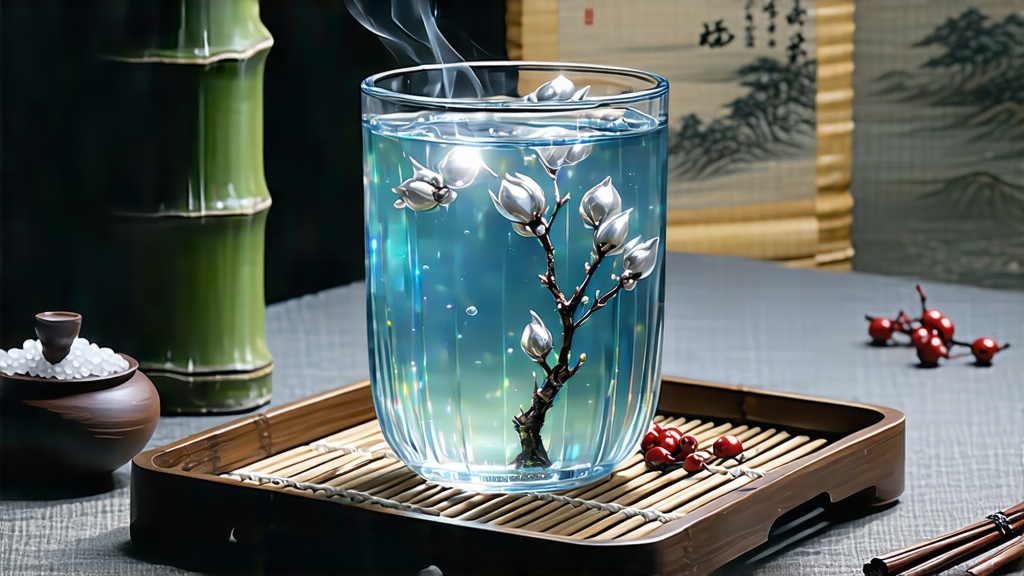
If green tea is the exuberant youth of Chinese tea culture and pu-erh its venerable elder, then Bai Hao Yin Zhen—literally “White Hair Silver Needle”—is the moonlit poet who arrives quietly, stays briefly, and is never forgotten. Revered as the apex of white tea, this downy-tip elixir has been cultivated for barely two centuries, yet it carries the fragrance of Tang-dynasty caravans and the hush of Song-dynasty night markets. To international drinkers accustomed to bold blacks or grassy senchas, Yin Zhen offers a paradox: the palest liquor with the most persistent aftertaste, the least processing yet the most nuanced chemistry, the simplest leaf yet the most demanding craft. This essay invites you into the misty gardens of northern Fujian to witness how a single bud becomes a silver needle, how a single sip becomes a memory.
-
Historical Echoes: From Imperial Tribute to Global Boutique
White tea as a category first appears in the Song Shi (History of Song, 1345 CE), yet the name “Yin Zhen” does not surface until 1796, when tea merchants in Fuding County began selecting only the unopened leaf buds of the Da Bai cultivar, air-drying them on bamboo screens, and packing them in lead-lined tins for the Guangzhou export market. European portraits of Chinese emperors sipping “silver-tip imperial tea” are romantic exaggerations—Qing court records list Yin Zhen as a minor tribute item, overshadowed by compressed pu-erh cakes and roasted Wuyi rock oolongs. Nevertheless, the 1875 Fuding Gazetteer boasts that “one liang of needle exceeds one liang of silver,” testimony to its rarity. After the collapse of imperial trade monopolies, Fuding growers shifted to black and green teas; Yin Zhen survived only because monks at the Hongfu Temple bartered it for medicinal herbs. Revival arrived in 1963 when the Fujian Tea Import & Export Corporation re-introduced Yin Zhen to Hong Kong connoisseurs, and by 2012 it graced the menus of Michelin three-star restaurants from Paris to San Francisco. Today fewer than 800 metric tons reach global markets annually—less than 0.1 % of China’s total tea output—making authentic Fuding Yin Zhen rarer per capita than Grand Cru Burgundy. -
Terroir: Where Ocean Mist Meets Granite Breath
Authentic Yin Zhen is geographically locked to three micro-zones at 27° N latitude:- Fuding’s Taimu Mountain, where porphyritic granite soils drain rapidly yet retain just enough moisture to stress the bushes into concentrating amino acids.
- Zhenghe’s high-plateau terraces, shrouded in fog 220 days per year, slowing photosynthesis and enlarging buds.
- Jianyang’s limestone foothills, whose alkaline groundwater tempers the tea’s catechins, yielding a sweeter, almost almond-like finish.
The Da Bai (Big White) tea tree is itself a living artifact: a 1.5–2 meter shrub whose spring buds can reach 3.5 cm, cloaked in a trichome so dense it resembles hoarfrost. These hairs are not mere ornament; they store volatile terpenes that release jasmine, cucumber, and wild honey notes when rehydrated. Because the buds are picked only during a ten-day window in late March, when overnight temperatures dip to 8 °C but daytime highs stay below 18 °C, the ratio of theanine to polyphenols peaks, gifting Yin Zhen its signature umami-sweet balance without a trace of bitterness.
-
Craft: The Art of Letting Go
Unlike any other tea, Yin Zhen is finished by “doing nothing”—yet nothing is harder to do well. The sequence sounds deceptively simple: pick, wither, dry. In reality each step is a negotiation with humidity, wind, and cosmic rays.
a. Picking: Pluck at dawn (5:30–7:00 a.m.) while dew still sheathes the bud; any later and solar irradiance begins converting theanine into bitter arginine. Standards demand “two exclusions”: no purple buds (anthocyanin taints aroma) and no open leaves (enzymes shift toward grassy aldehydes).
b